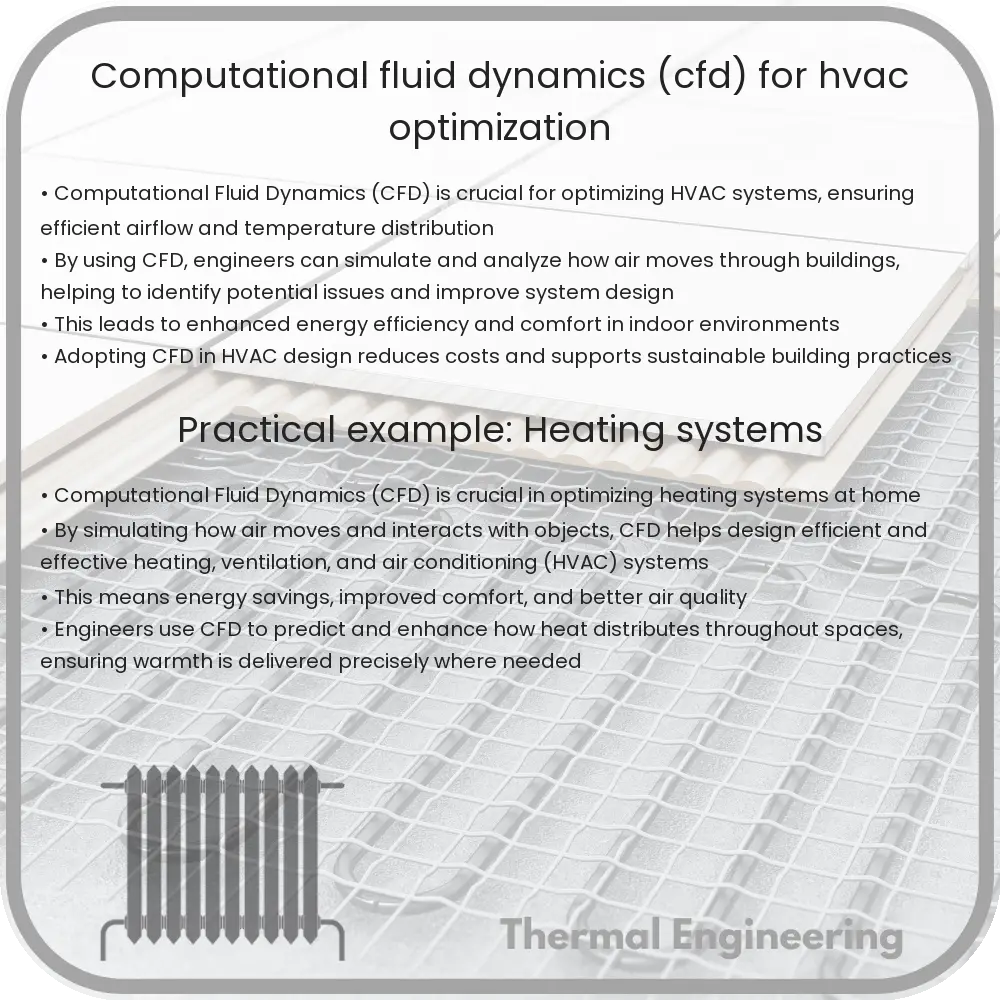Learn how Computational Fluid Dynamics (CFD) enhances HVAC system efficiency by optimizing airflow, temperature regulation, and energy use.

Understanding Computational Fluid Dynamics (CFD) in HVAC Optimization
Heating, Ventilation, and Air Conditioning (HVAC) systems are an essential component of residential, industrial, and commercial buildings, ensuring a comfortable and safe environment. The optimization of these systems for efficiency and effectiveness is paramount, and here, Computational Fluid Dynamics (CFD) plays a vital role.
What is Computational Fluid Dynamics (CFD)?
Computational Fluid Dynamics (CFD) is a branch of fluid mechanics that uses numerical analysis and data algorithms to solve and analyze problems involving fluid flows. The method utilizes computational software to simulate the interaction of liquids and gases with surfaces defined by boundary conditions. By using CFD, engineers can model the flow of air, heat transfer, and other related physical phenomena in virtual environments without the need for costly experimental testing.
Application of CFD in HVAC Systems
CFD allows engineers to optimize HVAC systems by providing detailed visualizations of how air flows through ducts, around equipment, and within occupied spaces. The primary goal is to enhance thermal comfort and improve the quality of indoor air, while minimizing energy consumption. Here are some ways CFD contributes to HVAC optimization:
- Airflow Optimization: CFD simulations help in designing ductwork that maximizes air distribution while minimizing energy losses. This is crucial for maintaining uniform temperatures and adequate air circulation throughout the space.
- Temperature Regulation: By simulating various scenarios, CFD helps in understanding how heat transfer occurs within different building spaces. These insights are essential for the optimal placement of heating and cooling elements.
- Contaminant Control: CFD is used to study the movement of potential contaminants in an indoor environment. This is particularly important in settings such as hospitals or laboratories, where air quality is tightly controlled.
- Energy Efficiency: With rising energy costs and environmental concerns, efficiency is a major focus in HVAC design. CFD provides a framework to study and implement energy-saving measures effectively.
Steps Involved in CFD Analysis for HVAC
- Problem Definition: Clearly define the scope of the study, including the expected outcomes and limitations.
- Model Creation: Develop a geometric model of the HVAC system, which includes ducts, vents, and other key components.
- Meshing: Divide the model into small, discrete cells that the simulation will use to solve the fluid flow equations.
- Setup and Solution: Input boundary conditions (e.g., inflow velocity, temperature) and physical models, then run the simulation to solve the governing equations.
- Data Analysis: Evaluate the results for velocity fields, temperature distribution, particle tracking, etc., and reinterpret them to suggest practical solutions.
Adopting CFD in the design and development phase of HVAC systems can substantially decrease the risk of costly modifications after installation and provide systems that operate more efficiently from the start. Advances in computational power and the development of user-friendly software continue to diminish barriers, making CFD a more accessible and powerful tool than ever before. Continued innovation in both CFD techniques and HVAC technologies predicts a future where optimal indoor environments are achieved with minimal environmental impact.
In summary, the integration of CFD in HVAC system design and optimization helps in achieving superior air quality and thermal comfort, promotes energy efficiency, and supports the sustainability goals of the modern world.